After a remarkable series of Strix graphics, Asus is betting once more for this series with such a unique and aggressive aesthetics, in this case with a pair of 7.1 gaming headphones that comes to compete with alternatives such as the Razer Tiamat.
It is a kit that includes external DSP with an integrated noise cancelling microphone, headphones with real 7.1 microgo sound, and a whole lot of other functions in order to improve the surrounding sensation and amplify some frequencies, for example, to highlight the footsteps in shooting games. A really ambitious bet that we will now see how it behaves.
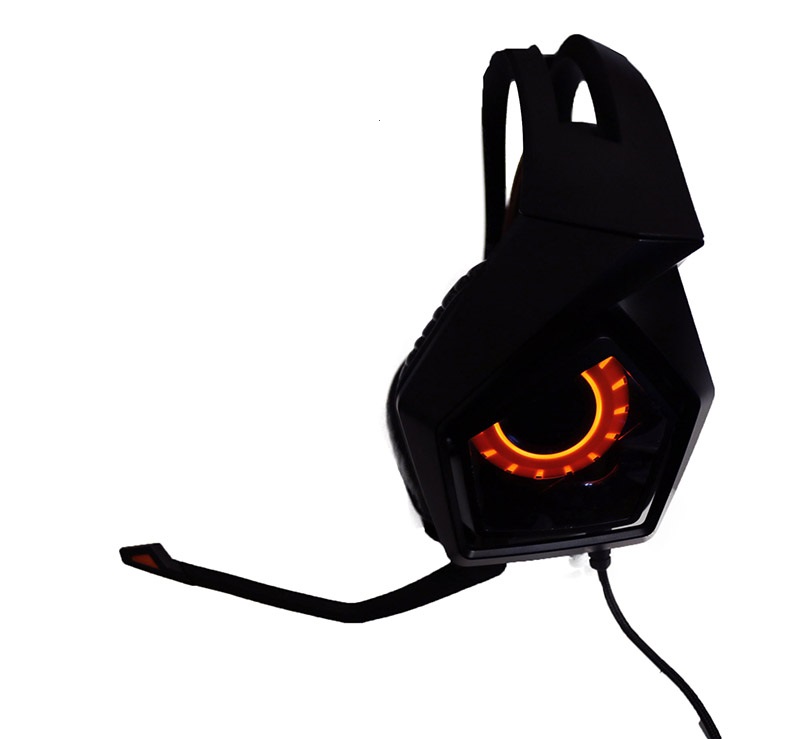
Technical Specifications
Compatibility: PC, MAC
Headphones:
Connector: USB
Driver
Driver diameter: Front: 40 mm, Subwoofer: 40 mm, Center: 30 mm, Side: 20 mm Rear: 20 mm
Driver Material: Neodymium magnet
Impedance @ 32 Ohm Hz ±%
Frequency response (headphones) 20 ~ 20000 Hz
Microphone
Type:Uni-directional
Frequency response: 50 ~ 16000 Hz
Sensitivity
Sensitivity: -40 dB
General information
Cable
Shielded cable (USB Cable headphone 1.5M + 1.5M = 3M (Max.)
Full length: 3 meter
Weight: 450 g
Accessories
Detachable Microphone
USB Cable
Quick Start Guide
USB audio station
HDMI converter to 3.5mm speaker
Notes
ENC performance:> 90% noise cancellation
Power supply: USB powered
Features: headphone amplifier, stereo, noise cancellation, so game profiles
Speaker Output: HDMI jack Connectors using the included 3.5mm adapter
Asus STRIX 7.1
We started as usual with an outside look. The headphones come in a flashy box, well protected, and with its accessories on a second level.
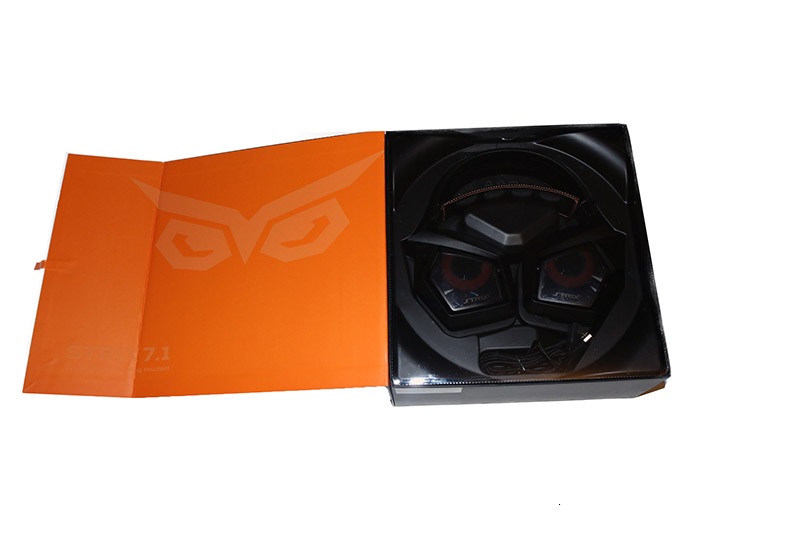
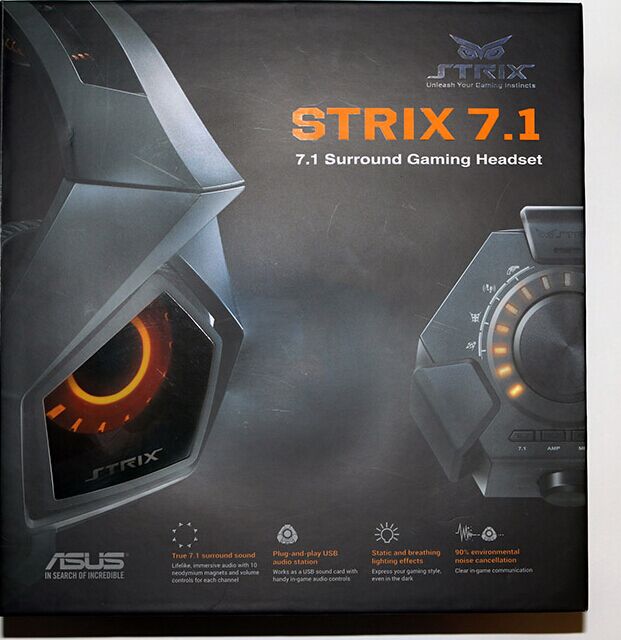
The manual is quite complete and well explained. You can appreciate the accessories on the following picture – a USB cable to connect to our PC, and an analogical output adapter in case we want to plug in the 7.1 speakers to the headphones DSP.
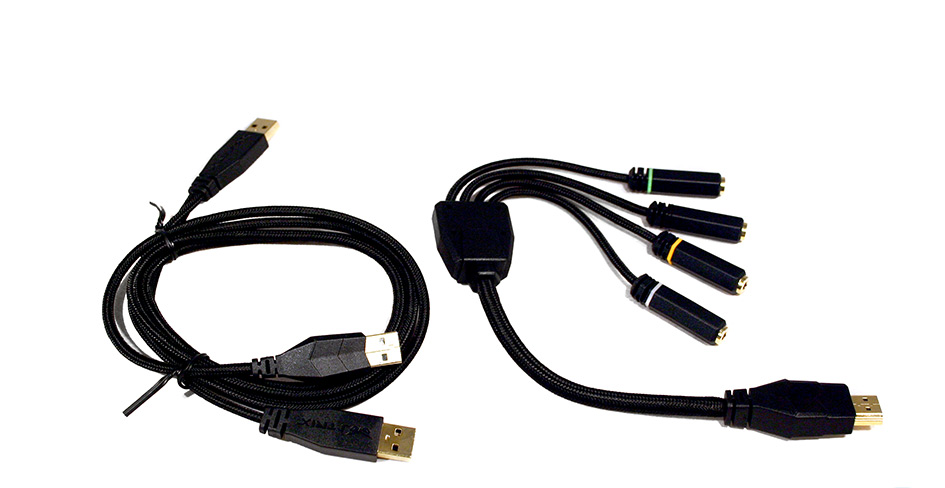
We can note that unlike popular competitors such as the Razer Tiamat, these headphones include a DSP, or in other words, they integrate their own sound card within the same volume control model, a remarkable advantage because we don’t need a 7.1 sound card, making it a solid alternative for those who enjoy playing on their laptops.
In general, the inclusion of the DSP tends to entail a small increase in the price for the final user, unlike all the other models that don’t include this. Even though their price is quite aggressive, they are actually cheaper than the aforementioned Tiamat, positioning themselves with a very competitive prices for their market.
The installation is as simple as plug and play. On the computer we were doing the tests on, using Windows 8.1, it was not necessary to configure anything at all in order for the headphones to be fully useable.
Back to the headphones, it stands out that the aesthetics aspect is very well taken care of in the graphics line and strix peripherals.
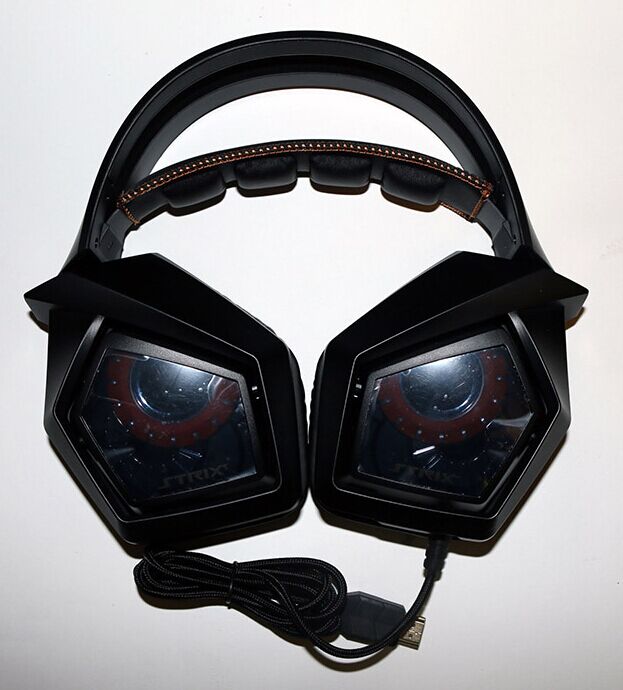
The pads are of very good quality, isolate the external noise and are very comfortable. The headband can be adjusted to the height where we place the headphones, fixing them so they don’t fall. Very important job because a pair of misplaced 7.1 headphones can spoil the surrounding sound feeling.
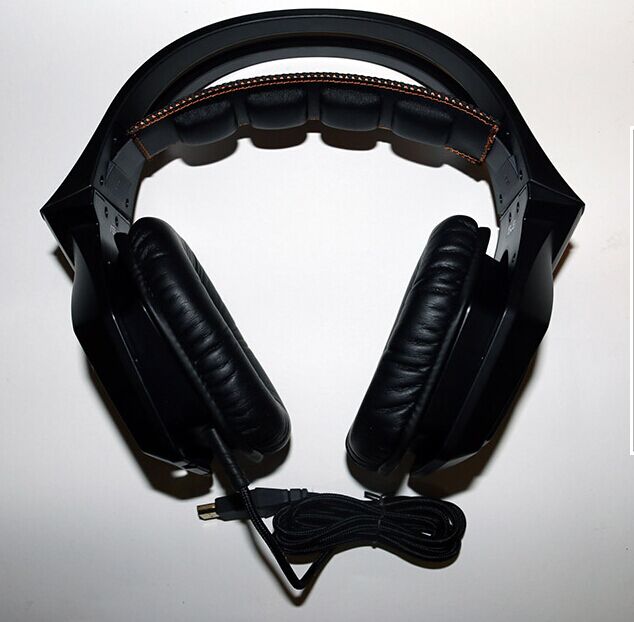
As for the DSP, the inclusion of a microphone stands out. It is used for ambient noise cancelling, very useful if you want to play in noisy environments or with a lot of people around. The rest of it is quite classic, a wheel to regulate the volume and a selector to pick the channel or regulate the rest of options.
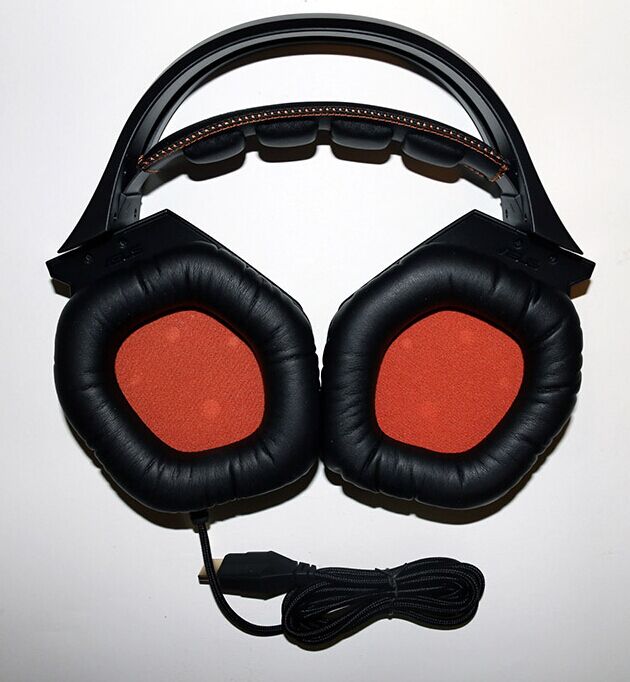
We also make a point that the light can be adjusted to make it permanent, pulse, or just deactivate it from within the DSP. Almost everything is configurable, with modes for the different types of games on the top left corner.
Personally, I’ve noted a significant change when equalizing from one mode to another, although it is quite hard to tell the difference with the footsteps, just to give an example.
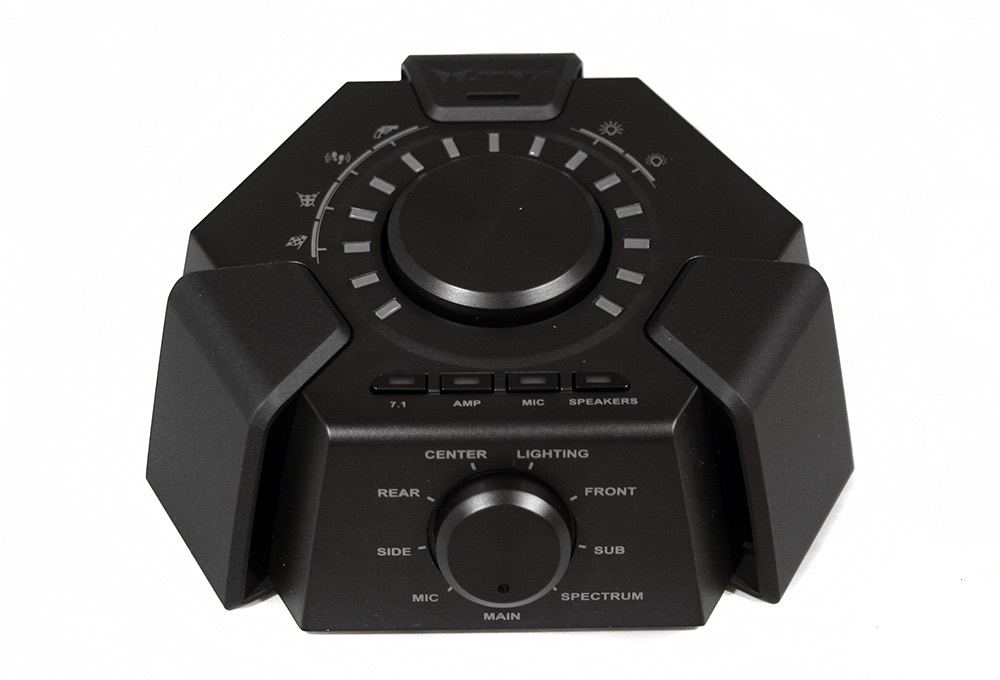
The surrounding sensation is very good, and in games, the immersion is quite the same with a 7.1 sound system, with a good spatial localization and without shortcomings.
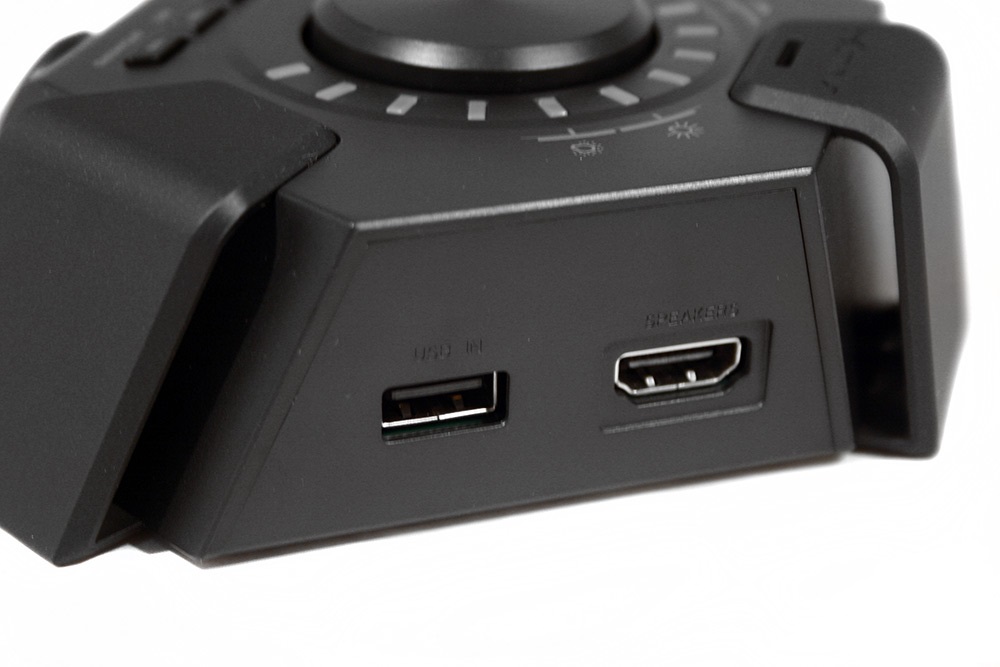
As music headphones, even though it’s not their field and any audiophile knows it, they can defend their ground, with very good bass and a general balanced sound, good for rock or metal. In case you want to listen to music with them, it is recommended to use them in stereo mode, because with the active surrounding the music might be a bit washed out and the max volume without amplifying can be insufficient for some users.
Nonetheless, the headphones are very complete because they can show all their potential in the field they were created for: the video games.
Conclusion
Without doubt, a pair of headphones like this won’t leave anybody indifferent. The aesthetics can be a bit too aggressive for some, but without any doubt, for the potential user – Gamers in general – it looks like a right guess; they are stylish and flashy.
They are foldable, the pads materials are good quality and even if the joint with the headband seems a bit fragile, the rest is very solid and well-constructed. They are comfortable for long sessions, not too heavy, and easy to install.
What’s the catch? Certainly, in the range we are, the first thing that comes to mind is the price, although I must say that after taking a look at the other alternatives, 130 euros don’t seem like that much. For the music lovers, it can be a good option if it’s not their main use, although the specialized brands in this markets have a big advantage, and let’s keep in mind this is not the headphones market.
ADVANTAGES:
+ QUALITY MATERIALS
+ 7.1 REAL, FEELING VERY WIDE GOT
+ BUG REMOVABLE
+ DSP EXTERNAL, NO SOUND CARD REQUIRED
+ GENERAL DESIGN. POSSIBILITY OF OFF THE LEDS
+ EXCELLENT PERFORMANCE IN GAMES
+ GOOD ENOUGH IN AUDIO. FULL SPECTRUM 20HZ-20KHZ AUDIBLE
DISADVANTAGES
– THE AUDIOPHILE CONTINUE TO PREFER STEREO HELMETS OF QUALITY AND AMP OWN